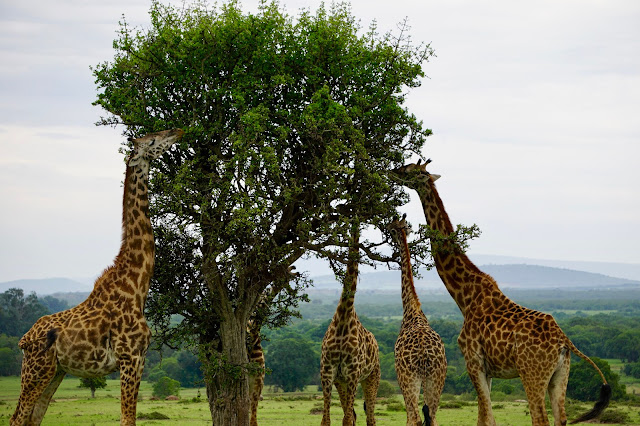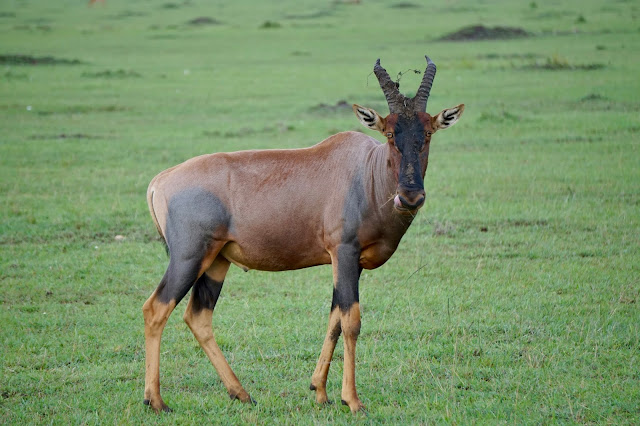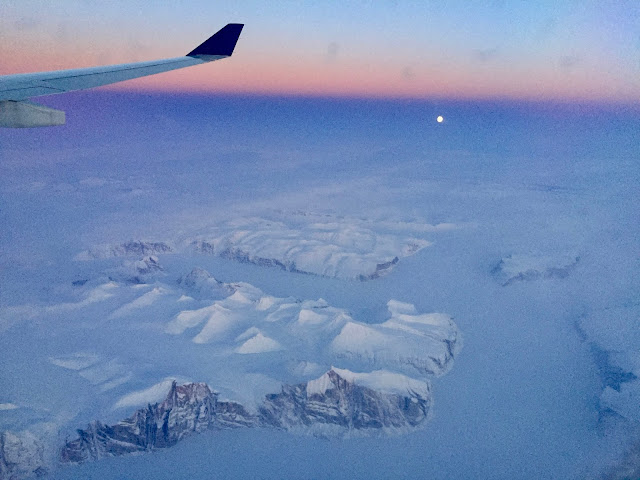On my last weekend, I went down to the Masai Mara Reserve and saw a ton of animals. I saw almost everything I expected to see. I did not, however, complete the "Big Five"
 |
| Tuskys - a Kenyan grocery store chain. For those who think of "Big 5" in the U.S., no, they do not also sell safari-related sporting goods. |
I saw the rhino, lion, leopard, and Cape buffalo, but missed the elephants. They are not easy to miss! But they move around, and were no where near the area of my safari when I was there, apparently.
What is this "Big Five?" These are the 5 most dangerous big game animals that are also prized for their coats, manes, or tusks and were considered trophy animals and a true test of a hunter. As my safari guide put it: "if you cannot kill them, they will kill you." Of course, there was no hunting happening on my trip or any evidence of it in the area. But as you are probably aware, poaching of these amazing animals is still a huge problem.
I will share a very small subset the pictures I took on this safari. It was incredibly beautiful, and gave me a whole new respect for these animals, as well as the Masai people who have lived harmoniously with them for millennia. The Masai do not hunt game for food, relying instead on their livestock, traditionally cattle.
 |
| Zebra with some friends |
 |
| Cape buffalo |
 |
| Eeland antelope. Big! |
 |
| A young giraffe in a hurry to join its buddies |
 |
| A "tower" of giraffes. |
 |
| A "journey" of giraffes |
 |
| Ostriches! Male and female. |
 |
| Bones were everywhere. The "circle of life" thing right before your eyes! |
 |
| The male leopard, well camouflaged in a tree, looking fierce while resting. |
 |
| A toppie antelope licking its chops |
 |
| Lionesses on the hunt! |
 |
| Dik dik! The most petit and adorable of all antelopes (that I know of). |
 |
| White rhinos! |
 |
| Hippos of various sizes |
 |
| Hippo play? |
 |
| On a Masai Mara run with David and Chris - through the same area where we saw the lions hunting the previous evening! |
 |
| Stopping by a Masai Village |
 |
| Scenes of daily life as we drove from one game area to another |
 |
| The lions lounge about |
 |
| That face... |
 |
| We found a mother with 3 cubs. I have so many more pictures of this... |
 |
| Awww. <3 |
 |
| Dramatic clouds as a storm builds behind us |
 |
| The nature photographer at work! |
 |
| A cheetah also enjoying some relaxation. Big cats are only active a few hours a day. |
 |
| Coming back through torrential rain, massive mud holes, washed out roads, and local traffic |
 |
| Sunrise on my last morning in Kenya |
 |
| Hyenas and their breakfast |
 |
| Mama leopard |
 |
| Cub leopard! Looks just like a house kitten |
 |
| Jackal and its breakfast |
 |
| Game driver Lecoco and our trusty safari-mobile. He drove us through some extremely rough, muddy places. Getting around was half the fun. He also seemed to know how to find all the big cats! In about 15 hours, I would be on a plane to Amsterdam. |























































